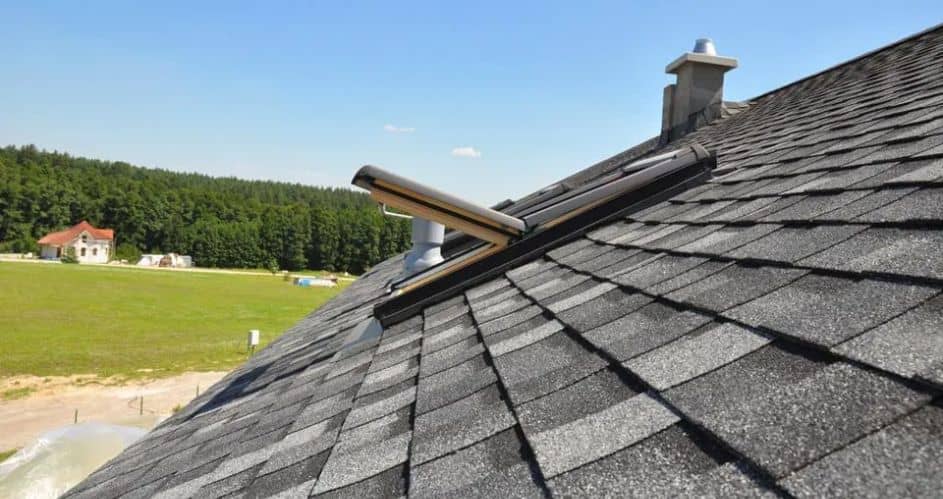
As a homeowner, it is important to know what type of roofing material to choose when deciding on an installation. After all, your roof plays an incredibly important role in protecting the integrity of your home from inclement weather and other environmental factors.
Whether you are looking for a simpler solution or want something more durable, there are different types of roofing materials available to suit every budget and project requirement.
Here, with the help of Oak Lawn Roofing, we’ll discuss different types of roofing and give you an overview of how different roofs compare in terms of installation difficulty.
Which Roofing Type Is Easy To Install
Asphalt Shingles
Asphalt shingles are relatively easy to install due to their design. Unlike other roofing materials like cedar or slate, asphalt shingles come in large sheets that can be easily layered onto a roof. This makes the installation process quicker and more efficient, resulting in a shorter time frame for completion.
Moreover, this type of shingle doesn’t require any specialized tools or techniques to install, making it easier for a professional to install or even a DIY project for homeowners.
Once installed, the shingles provide a strong and durable barrier against the elements. This is due to their fiberglass core sandwiched between layers of waterproof asphalt and ceramic granules.
Apart from its ease of installation, asphalt shingles are also a budget-friendly option. They are significantly less expensive than other materials like cedar or slate, so homeowners can achieve a high-end look for their homes without breaking the bank.
They also come in various styles and colors, allowing you to achieve the look you want for your home.
Metal Roof
Metal roofs are lightweight compared to other roofing materials, which makes them easier to install. They can be placed directly on top of your old roof, eliminating the need for extensive tear-off and disposal of the existing roof.
Metal roofing panels interlock easily, which speeds up the installation process. This means your roof can be installed quickly and efficiently, reducing the cost of labor.
Another benefit of metal roofing installation is that it requires no special tools. Basic tools such as a metal saw, drill, and standard roofing equipment are all needed for a successful installation.
Aside from ease of installation, metal roofs are also durable, energy-efficient, and long lasting, making them a popular choice among homeowners.
Roof Tiles
Roof tiles can be a durable and aesthetically pleasing option. Made from materials such as concrete, clay, and slate, roof tiles are known for their longevity and resistance to weathering. They can come in various shapes, sizes, and colors to complement the style of your home.
However, installing a tile roof can be a challenging process, requiring a significant amount of time and effort. It involves multiple steps, including preparing the roof deck, laying underlayment, installing battens, and placing the tiles.
Without proper technique and experience, mistakes can be made, which can compromise the integrity of the roof. That being said, if you hire a professional roofing contractor who specializes in tile roof installation, the process can be streamlined and efficient.
The contractor will have the expertise and equipment needed to carry out the installation with precision and skill. Moreover, a well-installed tile roof can last upwards of 50 years, providing excellent value for your investment.
Flat Roof
This type of roofing is designed with a minimal slope and is often used in commercial and residential buildings. Flat roofs offer a smooth surface and are typically less expensive than other roofing materials, making them a popular choice for those on a budget.
One of the main advantages of flat roofs is that they are much easier to install since there is no need to create angled slopes or complicated shingle patterns. However, hiring a professional is still a good idea if you’re not experienced with roofing installations.
There are several types of flat roofing materials available, including EPDM, TPO, and PVC. EPDM (ethylene propylene diene monomer) is made from synthetic rubber and is known for its durability and resistance to UV rays.
TPO (thermoplastic olefin) is a type of single-ply roofing that is lightweight and energy-efficient. PVC (polyvinyl chloride) roofing is also a type of single-ply roofing, but it’s known for its longevity and resistance to chemical damage.
No matter which type of flat roofing material you choose, it’s important to keep in mind that proper installation and maintenance are key to making sure your roof lasts for years to come. With the right tools and a little bit of know-how, however, you can install a flat roof with ease – and enjoy all the benefits of it.
The ease of installation will depend on several factors, including the type of roofing material, the complexity of the roof design, and the skills and experience of the installer. It’s always best to consult a professional roofing contractor to determine which roofing material best fits your specific needs and circumstances.
